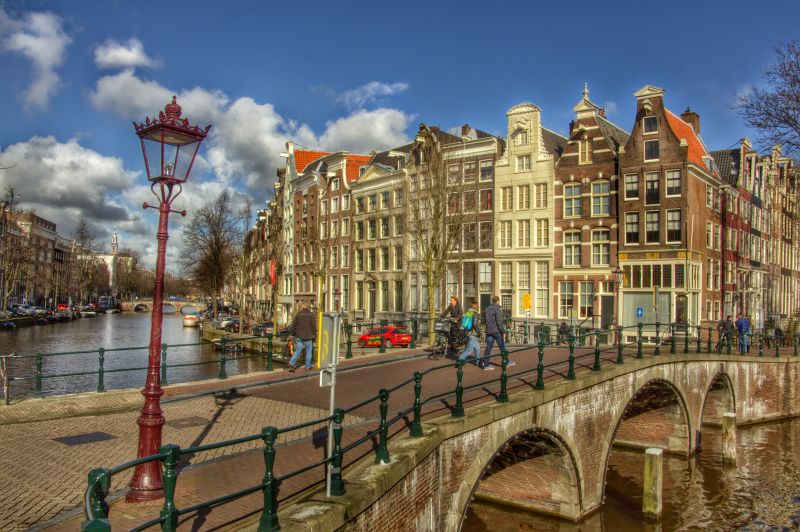Coronavirus and Canada Tourism: Impact, Effects, and Measures Taken
Time:2024-02-26 Page View:1068
The coronavirus pandemic has affected countless industries around the world, and Canada's tourism sector has certainly not been spared. With travel restrictions and health regulations affecting both domestic and international tourists, the industry has suffered a devastating blow. However, as the country has gradually lifted restrictions, some tourism operators are cautiously reopening with new safety measures in place to protect visitors. Despite the challenges, Canada still has plenty to offer to those willing to travel.
Many of Canada's outdoor attractions remain open to visitors with limited capacity and other health precautions in place. From majestic natural wonders such as Banff and Jasper National Parks, to thriving cosmopolitan cities like Toronto and Vancouver, there is an abundance of sights and experiences to discover. There are also new travel trends emerging such as slow travel and hyperlocal tourism, which allow visitors to experience the local culture and scenery in a more intimate and authentic way.
What is the impact of coronavirus on Canada tourism?

Since the outbreak of coronavirus, the global tourism industry has experienced a significant decline. As one of the most popular tourist destinations in the world, Canada has also been affected by the pandemic. This article will explore the impact of coronavirus on Canada tourism in detail.
1. Decrease in International Visitor Arrivals
Canada relies heavily on international visitors for its tourism industry. However, due to travel restrictions and fear of the virus, the number of international visitor arrivals has declined rapidly. In March 2020, the number of international visitors to Canada fell by 45.2% compared with the same period last year.
The decline in international visitor arrivals has had a significant negative impact on Canada's tourism industry. The loss of revenue has also resulted in job losses, particularly in the travel sector.
2. Cancellation of Major Events
Many major events in Canada, including sporting events, festivals, and conferences, have been canceled or postponed due to the pandemic. For example, the annual Toronto International Film Festival, which attracts thousands of visitors every year, was held virtually in 2020.
The cancellation of major events has not only affected the tourism industry but has also had a ripple effect on the economy. Small businesses that depend on these events, such as hotels, restaurants, and souvenir shops, have also suffered losses.
3. Changes in Travel Behavior
The pandemic has also brought changes to travel behavior in Canada. Many people have canceled their travel plans and chosen to stay closer to home. As a result, domestic tourism has become more popular, and some regions of Canada have seen an increase in local visitors.
However, the change in travel behavior has not offset the loss of revenue from international visitors. In addition, some businesses that depend on international visitors have had to adapt to the change in travel behavior, such as by offering more local experiences.
4. Government Support for the Tourism Industry
The Canadian government has recognized the impact of coronavirus on the tourism industry and has provided financial support to affected businesses. For example, the government has established a relief fund of $500 million to support tourism businesses and organizations.
However, the government's support may not be enough to save all businesses. The tourism industry is facing an uncertain future, with many businesses unsure of when they will be able to recover from the impact of the pandemic.
5. Future Outlook
The future of Canada's tourism industry remains uncertain due to the ongoing pandemic. International travel is likely to remain restricted for some time, and businesses will need to adapt to changes in travel behavior.
Despite the challenges, there are opportunities for the tourism industry to recover and grow in the future. The pandemic has highlighted the importance of sustainable tourism, and businesses that prioritize sustainability may be better positioned to attract visitors in the long term.
Are there any financial aids available for the businesses affected by coronavirus in Canada tourism?

Due to the outbreak of coronavirus, tourism has been one of the most affected sectors worldwide. In Canada, the impact on this industry has been severe, and businesses are struggling to stay afloat. However, the Canadian government has implemented measures to support those affected by this crisis. This article aims to provide an overview of the financial aids available for companies affected by the coronavirus pandemic in Canada's tourism sector.
1. The Canada Emergency Wage Subsidy (CEWS)
The CEWS provides eligible employers with a subsidy to cover part of their employees' salary. The subsidy covers up to 75% of the employee's wages, up to a maximum of $847 per week. Eligible employers can apply for this subsidy retroactively as far back as March 15, 2020.
The CEWS has been extended until September 25, 2021, providing continued support for businesses affected by the pandemic.
2. Regional Relief and Recovery Fund (RRRF)
The RRRF is designed to assist businesses that are not eligible for other COVID-19 relief measures. This fund provides interest-free loans to cover operating costs such as rent, salaries, and utilities. The loan amount can range from $40,000 to $1 million, and repayment terms are flexible.
The RRRF has been extended to March 31, 2021, and it will provide support to rural businesses, community futures development corporations (CFDC), and Aboriginal financial institutions (AFIs).
3. Canada Emergency Business Account (CEBA)
The CEBA provides interest-free loans to small businesses and not-for-profit organizations. The loan amount can be up to $60,000, and if the loan is repaid by December 31, 2022, one-third of the loan amount (up to $20,000) will be forgiven. The CEBA has been expanded to include businesses that showed $20,000 to $1.5 million in payroll in 2019.
4. Tourism Relief Fund
The government of Canada allocated $500 million to the Canadian tourism sector through the Tourism Relief Fund. The fund is designed to help alleviate the impacts of COVID-19 on the industry. The money can be used for investments, debt and interest payments, rent or lease payments, and labour costs.
The Tourism Relief Fund has helped many businesses continue operations amid the pandemic and continues to receive applications from those in need of support.
What are the travel restrictions for tourists due to coronavirus in Canada?

As a result of the ongoing global outbreak of COVID-19, Canada has implemented several travel restrictions and measures to limit the spread of the virus within the country. Many tourists planning to visit Canada may be unsure of these new guidelines, and how they may impact their travel plans. This article aims to provide a detailed overview of the current travel restrictions for tourists in Canada.
1. Who can Travel to Canada?
Currently, only Canadian citizens, permanent residents, and those with immediate family members who are Canadian citizens or permanent residents can enter Canada. Foreign nationals who have been granted a travel exemption by the Canadian government may also be allowed to enter.
However, travelers from all countries must first undergo a mandatory 14-day quarantine upon arrival, regardless of their nationality or whether they are displaying symptoms of COVID-19. This quarantine can be completed at a government-approved facility or at a suitable place of the traveler's choice.
2. Essential Travel
Essential travel can still occur, including travel for health reasons, work, study, or to reunite with immediate family members. However, travelers entering Canada must still complete the mandatory 14-day quarantine upon arrival.
Additionally, the Canada-U.S. border remains closed to non-essential travel until at least September 21, 2020. This means that non-essential travel between the two countries is still prohibited.
3. Domestic Travel
There are currently no specific travel restrictions for domestic travel within Canada. However, some provinces and territories may have their own travel restrictions in place, such as mandatory quarantine requirements or restrictions on entry. It is important for travelers to check with the provincial or territorial government before traveling within Canada.
4. Air Travel
Anyone traveling to Canada by air, regardless of their citizenship or country of origin, must complete a health screening questionnaire prior to boarding their flight. This is in addition to the 14-day mandatory quarantine upon arrival in Canada.
Moreover, several airlines have suspended their services to certain Canadian destinations during the COVID-19 pandemic, due to decreased demand. Travelers should check with their airline for the latest service updates and changes.
5. Emergencies and COVID-19 Symptoms
If you are experiencing COVID-19 symptoms, such as coughing or difficulty breathing, or believe you may have been exposed to someone with COVID-19, it is crucial to avoid all non-essential travel and self-isolate immediately. Seek medical attention as soon as possible if symptoms worsen.
In case of emergencies, such as a serious illness or injury, travelers may still use emergency services in Canada. These services include 911, emergency rooms at hospitals, or local public health authorities.
What is the impact of coronavirus on Canada tourism?

Canada is well-known for its natural beauty, diverse culture, and friendly people. However, the COVID-19 pandemic has severely impacted the country's tourism industry, with many businesses struggling to survive. In this article, we will discuss the impact of the coronavirus on Canada's tourism industry, including the challenges it faces and the measures being taken to combat the pandemic's effects.
1. Decrease in international travelers
Canada's tourism industry depends largely on international travel, but the pandemic has caused a significant drop in visitor numbers. According to Statistics Canada, visits by non-residents dropped by 99.8% in May 2020, compared to the same month in 2019. This loss of visitors has led to a huge revenue loss for the industry.
The decrease in travelers has impacted all sectors of the tourism industry, including accommodation, transportation, and food and beverage services. With fewer visitors, many businesses have had to shut down or lay off employees.
2. Impact on Canadian economy
The decline in tourism has also affected the Canadian economy. According to the World Travel and Tourism Council (WTTC), the country's tourism industry contributed CAD 102 billion (USD 77 billion) to the country's GDP in 2019, accounting for 4.5% of total GDP. However, with the pandemic, the WTTC predicts that the industry's contribution to GDP could fall by up to 42.8% in 2020.
The loss of revenue has also impacted the Canadian government's finances, as the industry contributes significantly to tax revenue. The government has been providing financial support to the tourism industry to help it survive during this difficult time.
3. Travel restrictions and safety measures
To prevent the spread of the virus, the Canadian government has implemented strict travel restrictions. Non-residents are currently barred from entering Canada, with some exceptions. Canadians returning from abroad are required to quarantine for 14 days.
The government has also implemented safety protocols in the tourism industry, including increased cleaning and sanitization, physical distancing measures, and the use of masks and other personal protective equipment. These measures aim to protect both visitors and workers in the industry.
4. Opportunities for domestic tourism
While international travel has been restricted, there has been an increase in domestic tourism. Canadians have been exploring their own country, visiting attractions and destinations within the country. This has provided an opportunity for businesses that rely on domestic tourism to generate some revenue.
The Canadian government has also been promoting domestic tourism through initiatives like the 'Explore Canada' campaign. This campaign encourages Canadians to explore the country's natural beauty and cultural diversity while supporting local businesses.
5. Future outlook
The future of Canada's tourism industry is uncertain, as the pandemic continues to impact the world. However, there is hope that a vaccine will be developed soon, allowing international travel to resume. The Canadian government and industry leaders are working together to develop strategies to encourage visitors to return to the country when it is safe to do so.
What Measures Have Been Taken to Protect Tourists from Coronavirus in Canada?

As the world continues to grapple with the coronavirus pandemic, the tourism industry has been greatly affected. Governments and tourism boards are working hard to ensure the safety of tourists while also trying to revive the industry. Canada, like many other countries, has implemented measures to protect its citizens and visitors. This article will examine the measures taken by the Canadian government to protect tourists from coronavirus.
1. Travel Restriction Orders
The Canadian government closed its borders in March 2020 to foreigners and implemented a restriction order on all non-essential travel, which has since been extended. In addition, anyone entering the country will be screened for symptoms and asked to self-quarantine for 14 days, regardless if they have symptoms or not. Exceptions are made for essential workers including truck drivers and healthcare providers.
The Canadian Border Services Agency requires all air travellers to wear masks, answer health-related questions, and undergo a temperature check before boarding. Additionally, airlines must refuse boarding to any passenger who displays symptoms of COVID-19.
2. Increased Hygiene Practices
As part of the nationwide COVID-19 response, the Canadian authorities have increased hygiene practices, especially in public places. Tourist sites, hotels, and restaurants have implemented strict cleaning protocols through the usage of disinfectants, hand sanitizers, and proper ventilation systems. High traffic areas have installed hand sanitizing stations, and social distancing measures have been put in place.
The Canadian government has issued recommendations that all individuals wear masks when physical distancing is difficult, and employees in the food and accommodation industry wear personal protective equipment (PPE).
3. Accommodation Protocols
Hotels, resorts, and bed and breakfasts across Canada have implemented strict protocols to ensure the safety of guests. Before entering guest rooms, accommodation staff must clean surfaces with disinfectant, paying extra attention to high-touch areas such as doorknobs, light switches, and television controllers. They must also maintain hygiene levels in common areas for example, gyms, swimming pools, and saunas, among others.
Some accommodations have introduced contactless check-in, and are accommodating only one group of guests per unit at a time to ensure that there is minimal contact between parties. In addition, many hotels offer self-quarantine services to guests in case of symptoms.
4. Tourism Industry Protocols
The tourism industry in Canada has taken measures to protect visitors through guidelines set by industry regulators. Tour operators have limited tour sizes and are frequently sanitizing their vehicles. Tourist attractions have reduced capacity to ensure physical distancing guidelines are maintained. Many tourism boards have launched campaigns to promote local tourism to reduce the number of people travelling out of the country.
5. Collaboration with Health Experts
Since the beginning of the pandemic, the Canadian government has been working closely with health experts to determine the best course of action. The authorities have relied on guidance from organizations such as the World Health Organization (WHO) and Public Health Agency of Canada (PHAC) to develop health protocols to protect tourists and citizens. They are also providing regular updates to tourists and Canadians about the evolving situation.
When is the expected recovery time for Canada tourism after coronavirus?
Canada is famous for its picturesque landscapes, vibrant cities, peaceful countryside, and diverse wildlife. Its tourism industry has been thriving for many years and providing opportunities for millions of people to explore Canada's natural beauty and culture. However, the outbreak of coronavirus has severely impacted the country's tourism industry, leading to significant economic losses.
1. The current state of Canada's tourism industry
Since the beginning of the pandemic, Canada's borders have been closed to all non-essential travel. According to Statistics Canada, international arrivals to the country fell by a staggering 97% in April 2020 compared to the same period in 2019. This decline has had a significant impact on the tourism industry, with many businesses struggling to survive due to a lack of customers.
The situation is not much better for domestic tourism either. Many Canadians are hesitant to travel, especially to crowded places, due to the risk of contracting the virus. As a result, hotels, restaurants, and other tourism-related businesses are operating at reduced capacity, leading to financial difficulties for many.
2. The road to recovery
The tourism industry's recovery in Canada depends on several factors, such as the progress of the vaccination campaign, the easing of travel restrictions, and the return of consumer confidence. According to Travelweek, experts predict that the country's tourism industry may start to recover by the summer of 2021.
As vaccinations continue to roll out across the country, the government may also start to ease travel restrictions, allowing more visitors to enter Canada. Domestically, tourism may recover sooner as Canadians start to feel more comfortable traveling within their own country.
3. The importance of innovation
The pandemic has accelerated the need for innovation in the tourism industry. Businesses must adapt to changing circumstances, meet new demands, and offer experiences that prioritize safety and social distancing. Some innovative ideas that have emerged include virtual tours, outdoor activities, and private, customized tours.
Furthermore, the pandemic has highlighted the importance of sustainable tourism practices. Businesses that prioritize sustainability, environmental responsibility, and community engagement are likely to attract more customers in the post-pandemic world.
4. The role of government in supporting the recovery
The Canadian government has implemented measures to support the tourism industry during the pandemic, including rent relief, wage subsidies, and interest-free loans. Additionally, in November 2020, the government announced a $1 billion COVID-19 resilience fund to support affected businesses.
However, more support may be needed to ensure a smooth recovery. For instance, the government could invest in marketing campaigns to promote Canada's tourism industry or offer tax incentives or grants to businesses that prioritize sustainability and innovation.
5. The future of Canada's tourism industry
Despite the challenges posed by the pandemic, the future of Canada's tourism industry remains bright. The country's natural beauty, diverse culture, and welcoming people will continue to attract visitors from across the world. However, businesses must adapt to changing circumstances and invest in innovation and sustainability to remain competitive.
Are there any financial aids available for the businesses affected by coronavirus in Canada tourism?
As the coronavirus pandemic continues to ravage economies around the world, the tourism industry has taken a significant hit, and Canada's tourism industry is no exception. With the closure of borders and travel restrictions, many businesses in the sector are facing severe financial challenges, leading to concerns about job losses and the future of the industry.
1. The Canadian Emergency Wage Subsidy (CEWS)
The Canadian government is providing a range of financial support options to help businesses in the tourism industry recover from the impact of COVID-19. One such option is the Canadian Emergency Wage Subsidy. This program provides employers with a subsidy of up to 75% of their employees' salaries, up to a maximum of $847 per week per employee, for up to 12 weeks.
Eligible employers who have seen a decline in revenue of at least 30% due to COVID-19 can apply for this subsidy. The subsidy can be used to rehire employees who were laid off due to the pandemic or to keep current employees on the payroll.
2. The Business Credit Availability Program (BCAP)
The Business Credit Availability Program is another financial aid program offered by the Canadian government. This program is designed to help small and medium-sized businesses affected by COVID-19 access financing. The federal government has committed $65 billion to the program, which includes interest-free loans and loan guarantees.
The program is available to businesses of all sizes in the tourism industry that are expected to experience a cash flow decline as a result of the pandemic. Businesses can apply for loans of up to $6.25 million through their primary financial institution.
3. Canada Emergency Business Account (CEBA)
The Canada Emergency Business Account is a loan program for businesses in the tourism industry that are experiencing financial pressures due to COVID-19. Eligible businesses can receive up to $60,000 that is interest-free until December 31, 2022. After this date, the loan will be converted into a three-year term loan with an interest rate of 5%.
Businesses that have a payroll between $20,000 and $1.5 million in 2019 are eligible for this program. The funds can be used for expenses such as rent, utilities, and insurance.
4. Regional Relief and Recovery Fund (RRRF)
The Regional Relief and Recovery Fund is another financial aid option for businesses in the tourism industry. The fund provides financial support to businesses that are not eligible for other COVID-19 related government programs. The money is meant to help businesses meet their financial obligations and avoid layoffs.
The RRRF is available to businesses in all regions of Canada. However, priority will be given to businesses that are located in regions that have been particularly hard hit by the pandemic. These regions include rural and remote communities as well as those that are heavily dependent on tourism.
5. Canada Emergency Rent Subsidy (CERS)
The Canada Emergency Rent Subsidy is a new program that was introduced in November 2020. It provides rent subsidies directly to qualifying organizations that have experienced a revenue drop due to the pandemic. The subsidy covers up to 65% of rent or property expenses until March 13th, 2021.
Eligible businesses must have experienced a revenue decline of at least 70% due to COVID-19. The program is open to businesses of all sizes that have experienced losses.
What Measures Have Been Taken to Protect Tourists from Coronavirus in Canada?
Canada is known for its beautiful natural landscapes, vibrant cities, diverse cultures, and friendly locals. However, the country has not been immune to the global COVID-19 pandemic. To safeguard the health and safety of tourists, Canada has implemented a range of measures that have been updated over time in response to the evolving situation. This article provides an overview of the measures taken by Canada to protect tourists from coronavirus.
1. Travel Restrictions and Requirements
To prevent the importation and spread of COVID-19, Canada has imposed travel restrictions and requirements. The restrictions have been periodically adjusted based on the risk assessment of countries/jurisdictions and the epidemiological situation domestically. For instance, as of August 9, 2021, foreign nationals from all countries are allowed to enter Canada for non-essential reasons provided they meet specific requirements, such as full vaccination and pre-arrival testing. Unvaccinated tourists are not permitted to enter the country for non-essential travel. In addition, individuals who are eligible to enter Canada must use the ArriveCAN app to submit their vaccination details and contact information.
Moreover, there are quarantine and testing requirements that apply to all travelers arriving in Canada, regardless of their vaccination status. For instance, fully vaccinated travelers are exempted from quarantine, but they still must take pre-arrival and on-arrival tests. They must also have a suitable quarantine plan in case any symptoms arise or if they need to isolate. Unvaccinated travelers, on the other hand, must undergo a mandatory 14-day quarantine, followed by several tests.
2. Safety Protocols
Tourism businesses and public places in Canada must follow strict safety protocols to minimize the risk of COVID-19 transmission. For example, most indoor public places require facial coverings and have reduced capacities to allow for physical distancing. In restaurants, cinemas, and theaters, patrons are typically seated in small groups with a distance of at least two meters between them. Additionally, tourism operators such as museums, tour companies, and amusement parks have implemented enhanced sanitation procedures and increased ventilation to help reduce the risk of transmission.
3. Vaccination Rollout
Canada has a robust vaccination rollout plan that prioritizes various groups, including frontline workers, seniors, and people with underlying health conditions. As of August 12, 2021, over 52 million vaccine doses have been administered, and over 80% of the eligible population has received at least one dose. The high vaccination rate has contributed significantly to the country's efforts to reduce the spread of COVID-19 and protect both residents and visitors.
4. Health Care System Capacity
Canada has a publicly funded healthcare system that caters to all residents and visitors. The healthcare system has a considerable capacity to handle both COVID-19 cases and other health issues. The government has increased health care funding and resources to enhance preparedness and response to the pandemic. In addition, several COVID-19 assessment centers and testing sites have been set up across the country to support testing and contact tracing efforts.
5. Public Awareness Campaigns
The Canadian government has launched extensive public awareness campaigns to cultivate a culture of COVID-19 awareness and encourage individuals to follow safety measures. Campaigns have included public service announcements on television, radio, and social media platforms, as well as posters and signage in public areas and transport systems. The campaigns have emphasized the importance of wearing facial coverings, washing hands, maintaining physical distancing, and getting vaccinated.
How has coronavirus affected the tourism industry in Canada?
In recent years, tourism has become an essential industry in Canada, accounting for significant economic growth and providing employment opportunities. However, the emergence of the COVID-19 pandemic has significantly affected the tourism industry in Canada. The travel restrictions, lockdowns, and quarantine measures have led to a drastic decline in the number of tourists visiting Canada, causing financial losses to the tourism industry and other related sectors.
1. The Impact of Travel Restrictions on Tourism Industry in Canada
Since the beginning of the COVID-19 pandemic, many countries have imposed travel restrictions to limit the spread of the virus. As a result, Canada has also introduced strict travel measures, including limiting entry from foreign countries, mandatory quarantines, and proof of negative COVID-19 tests. These travel restrictions have severely impacted the tourism industry in Canada, resulting in a significant decline in tourist arrivals and revenue loss.
According to Statistics Canada, the number of arrivals in Canada decreased by 97.6% in May 2020 compared to May 2019. The revenue from international arrivals also declined from CAD 20.7 billion in 2019 to CAD 4.8 billion in 2020. Furthermore, these restrictions have caused job losses in the tourism sector, affecting workers in hotels, restaurants, and other tourism-related businesses, creating significant economic uncertainty for the entire industry.
2. The Role of Domestic Tourism to Support the Industry during the Pandemic
The COVID-19 pandemic has not only impacted international tourism but also domestic tourism in Canada. However, with the rise of the pandemic, domestic tourism has become more popular as Canadian citizens needed ways to enjoy their vacations while maintaining social distancing.
Many Canadians avoided traveling abroad and instead explored tourism in their country. The domestic tourism industry has played a vital role in supporting the country's economy and the tourism sector.
The government of Canada has also encouraged domestic tourism as a way to support the industry. For example, the Canadian government introduced the "Explore Canada" campaign, which highlighted the various tourist attractions and activities across the country.
3. The Impact of Tourism Industry on Indigenous Communities
The tourism industry has been a vital contributor to the economic development of Indigenous communities in Canada. However, the COVID-19 pandemic has significantly impacted these communities, leading to a decline in revenue and job loss.
Indigenous tourism businesses, such as cultural tours and accommodations, have faced significant financial challenges due to the decline in the number of visitors. Consequently, these businesses have experienced significant loss of income, leading to pressure on community and cultural sustainability.
4. The Future of Tourism Industry in Canada Post-pandemic
The COVID-19 pandemic has caused severe damage to the tourism industry in Canada. Although some aspects of the industry have shown resilience, the recovery process will be slow and challenging. However, with the increasing vaccination rates and the relaxing of travel restrictions, there is optimism in the Canadian tourism industry.
To help the industry, the Canadian government has announced various measures to support the industry, such as financial aid and business support programs. Additionally, the government has introduced plans to encourage tourism in rural areas and Indigenous communities.
5. The Importance of Health and Safety Measures in the Tourism Industry during COVID-19
The COVID-19 pandemic has highlighted the need for travel and tourism companies to prioritize health and safety measures. Tourists need to know that they can travel safely without risking their health and safety.
Many hotels and tourist attractions in Canada have introduced strict measures to prevent the spread of COVID-19. For example, hotels implement enhanced cleaning protocols in their facilities and use contactless technologies for check-in procedures. At the same time, tourist attractions limit the number of visitors to ensure social distancing.
Contact Us

